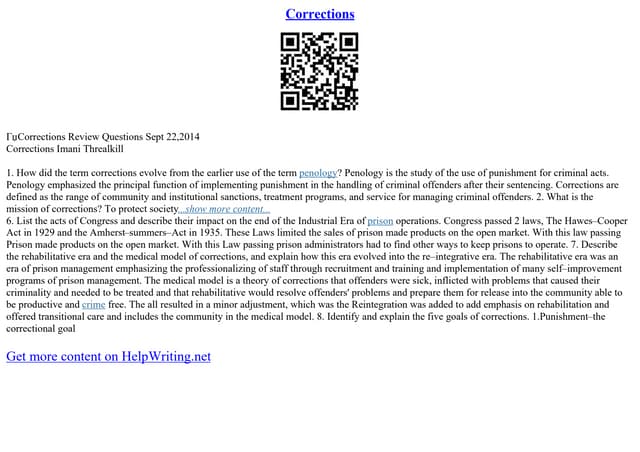Implementing A System For Corrections And Clarifications

Table of Contents
Defining Your Needs and Scope
Before implementing a system for corrections and clarifications, you need a clear understanding of your needs and scope. This involves identifying the types of information requiring these procedures and pinpointing potential sources of errors.
-
Information Types: Determine which information assets require a formal correction process. This could include:
- Website content (blog posts, articles, product descriptions)
- Marketing materials (brochures, advertisements, social media posts)
- Internal documents (policies, procedures, reports)
- Product specifications and manuals
- Public-facing statements and press releases
-
Sources of Errors: Identifying potential error sources helps in designing preventative measures. Common sources include:
- Human error (typos, factual inaccuracies, omissions)
- Outdated data (changes in regulations, market conditions, product information)
- System failures (database errors, software glitches)
- Miscommunication between teams or departments
-
Correction vs. Clarification: Establish clear definitions to distinguish between corrections (fixing factual errors) and clarifications (adding context or further explanation). This distinction will streamline the process and ensure efficient resource allocation.
-
Process Flowchart: Create a visual representation of the entire correction process, from error identification to final resolution. This flowchart should clearly outline each step and the responsible parties.
-
Role and Responsibility Matrix: Define who is responsible for each stage of the correction process. This may include:
- Error identification and reporting
- Verification of the error
- Implementation of the correction
- Communication of the correction to affected parties
- Archiving of correction records
Establishing a Formal Correction and Clarification Process
A well-defined process is the backbone of an effective system. This process should cover how errors are reported, tracked, and resolved.
-
Reporting Mechanism: Establish a clear and accessible method for reporting errors or requesting clarifications. This could involve:
- A dedicated email address
- An online form with specific fields for error details and contact information
- An internal ticketing system
-
Request Tracking: Implement a system for tracking the status of each correction request. This could be a simple spreadsheet or a dedicated project management tool. This allows for monitoring of response times and overall efficiency.
-
Timelines: Establish realistic timelines for reviewing and addressing correction requests based on the urgency and impact of the error. Prioritize critical errors requiring immediate attention.
-
Documentation: Maintain detailed records of all corrections made. This should include:
- Date of the correction
- Nature of the correction
- Individual responsible for making the correction
- Any relevant supporting documentation
-
Version Control: Utilize a version control system (like Git) for documents subject to frequent revisions. This ensures that all changes are tracked and easily recoverable.
Communication and Transparency
Open communication is crucial for maintaining trust and credibility. A well-defined communication plan ensures timely and effective notification of corrections.
-
Communication Protocols: Define how you will communicate corrections to affected parties. This might include:
- Website updates with clear and prominent notices
- Email notifications to subscribers or relevant stakeholders
- Press releases for significant corrections impacting the public
-
Communication Style: Adopt a consistent tone and style for all communications related to corrections and clarifications. Use clear and concise language, avoiding technical jargon whenever possible. Transparency is key: clearly explain the nature of the correction and its impact.
-
Correction Archive: Maintain a centralized archive of all corrections and clarifications. This serves as a valuable resource for future reference and demonstrates a commitment to accuracy and accountability.
Review and Improvement
Regularly reviewing and improving your system is essential for its long-term effectiveness.
-
Performance Evaluation: Track key metrics, including:
- Number of corrections made per month/quarter
- Average time taken to resolve a correction request
- User feedback on the correction process
-
Stakeholder Feedback: Gather feedback from employees, customers, and partners to identify areas for improvement. Surveys, interviews, and focus groups can be valuable tools.
-
System Audits: Conduct periodic audits to ensure the system remains up-to-date, effective, and aligned with organizational goals.
-
Software Solutions: Consider using specialized correction management software to streamline tracking, reporting, and communication.
Conclusion
Implementing a robust system for corrections and clarifications is vital for maintaining accuracy, transparency, and building trust with your audience. By following the steps outlined above, organizations can establish a clear, efficient process for addressing errors and ensuring the integrity of their information. Remember, a well-defined system for corrections and clarifications is not just about fixing mistakes; it’s about proactively managing information and fostering a culture of accountability. Start building your effective system for corrections and clarifications today!

Featured Posts
-
 The Eurovision Festival Your Guide To The Manchester Event
Apr 30, 2025
The Eurovision Festival Your Guide To The Manchester Event
Apr 30, 2025 -
 Documentario Mostra Trump Beyonce E Jay Z Em Festas Privadas De P Diddy
Apr 30, 2025
Documentario Mostra Trump Beyonce E Jay Z Em Festas Privadas De P Diddy
Apr 30, 2025 -
 T Mobile Data Breaches Result In 16 Million Fine
Apr 30, 2025
T Mobile Data Breaches Result In 16 Million Fine
Apr 30, 2025 -
 Fotbolti I Dag Dagskra Bestu Deildarinnar Og Valurs Moeguleikar
Apr 30, 2025
Fotbolti I Dag Dagskra Bestu Deildarinnar Og Valurs Moeguleikar
Apr 30, 2025 -
 Franche Comte Consentement Eclaire Et Chirurgie Des Hemorroides
Apr 30, 2025
Franche Comte Consentement Eclaire Et Chirurgie Des Hemorroides
Apr 30, 2025
